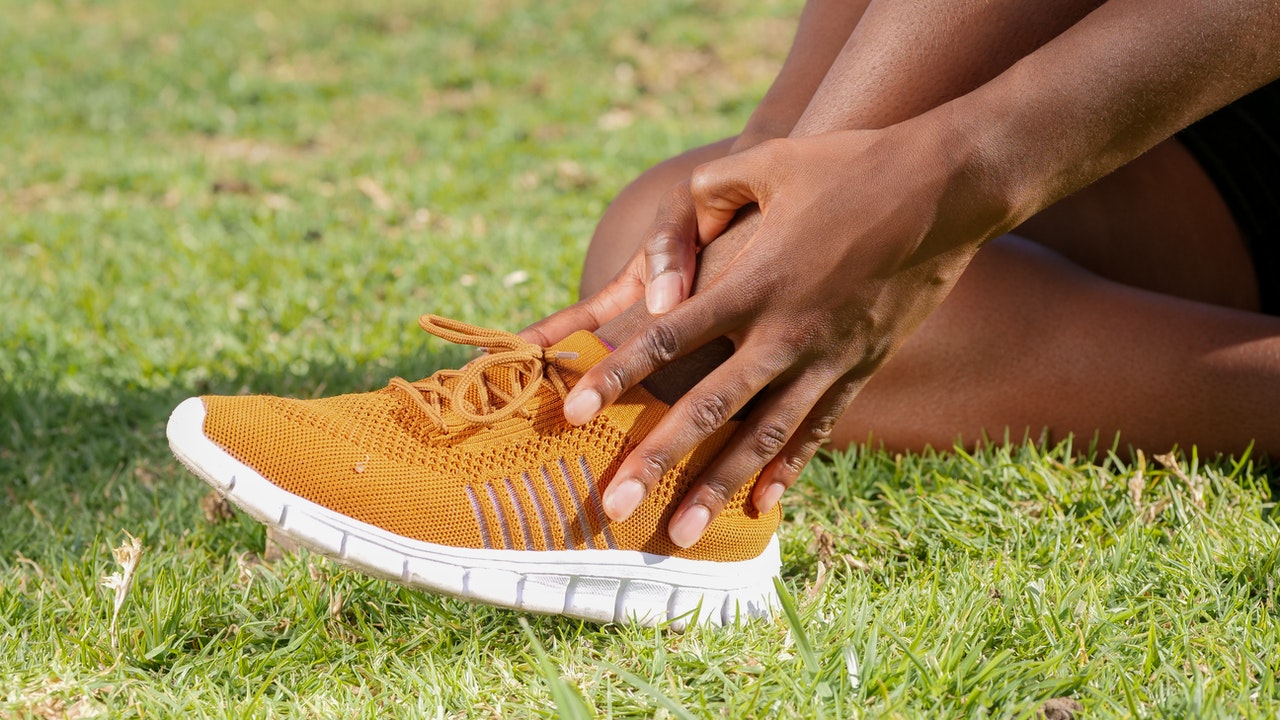Acupuncture has a good reputation for treating a wide range of conditions, but is acupuncture good for sprains? In this article, we discuss whether or not clients can benefit from acupuncture to treat current sprains, severe sprains, and old sprains.
So, is acupuncture good for sprains? Acupuncture may offer positive benefits for sprains and strains, including pain relief, improved circulation, reduced inflammation, and restoring range of motion. However, expert opinion differs, and many studies report inconclusive results on the topic.
Read on to learn more about the effects of acupuncture on sprains and other soft tissue injuries.
Does Acupuncture Help With Sprains?
Sprains, particularly ankle sprains, are some of the most common musculoskeletal injuries for both athletes and the general population. As such, there are a number of countries that regularly use acupuncture as sole treatment, or as a secondary intervention, for sprains(1). But, is there any value in this?
The majority of studies into acupuncture for sprains specifically focus on ankle sprains. As such, our research is somewhat biased, but it may provide some useful insight into acupuncture for sprains. What’s more, studies tend to report that evidence is insufficient to confidently recommend acupuncture as a treatment for sprains, stating that further trials are needed (1).
Despite a large number of inconclusive studies, one study into acupuncture for soft tissue damage suggests that acupuncture may offer long-term improvements to symptoms, or even a complete resolution. This study reported that out of 201 patients, 59% saw clinical resolution, and 33% saw remarkable improvements. Sprains are classed as soft tissue damage, therefore, in some cases, acupuncture may offer long-term benefits.
Furthermore, there are a number of other studies that indicate that acupuncture may be effective in treating the symptoms of sprains, including pain and swelling, and may be able to assist with restoring a good range of motion (1, 2, 3).
According to research, this works by improving the circulation of blood throughout the body, which delivers essential oxygen and nutrients to the injured area (1, 2). It is thought that this encourages healing and a faster recovery time. What’s more, acupuncture stimulation releases pain-relieving chemicals, such as endorphins and serotonin to help manage localised pain.
Is Acupuncture Good for a Severe Sprain?
Severe sprains and strains are classed as Grade 2-Grade 3 soft tissue damage. In some cases, such injuries can require surgery for a complete recovery. As such, acupuncture would be of no benefit until further down the road.
In cases where surgery isn’t required, the joint needs to be stabilised for a period of time, activity should be reduced and monitored, and physiotherapy may be advised. With some studies suggesting that acupuncture may aid in restoring a good range of motion, it could be beneficial to combine interventions for maximum effect.
Is Acupuncture Good for an Old Sprain?
Depending on the severity (1) of the sprain, it can take anywhere from 3-12+ weeks for the injury to completely heal. Clients may be back on their feet, with minimal pain, and a better range of motion during this time, but the joint takes longer to completely heal and stabilise.
As such, an “old sprain” doesn’t necessarily mean old, healed sprains, but existing injuries that are not yet fully healed. Therefore, the improved circulation that acupuncture is reported to provide, may assist with the healing process, and speed up recovery times (1, 2).
How Many Sessions of Acupuncture are Needed?
The number of acupuncture appointments a client needs depends on the condition being treated, its severity, and their general health and wellbeing. That being said, it is common for clients to receive a minimum of 6-8 treatments given in close proximity. After this, clients may require “tune-up” treatments every few weeks to maintain the benefits, although this isn’t always necessary.
Can Acupuncture Make Things Worse?
Sometimes, clients report that the symptoms of their condition temporarily worsen following an acupuncture session. Some also experience sweating, dizziness, and feeling faint. However, these effects are usually short-lasting, and will clear within a few hours.
A study into adverse effects associated with acupuncture concluded that, like any therapeutic approach, acupuncture has side effects. However, when performed correctly, with safety in mind, side effects are minimal, and the practice is generally considered safe. In fact, out of 409 patients in this study, adverse side effects were reported only 11.4% of the time.
Final Thoughts
Whilst a number of studies into acupuncture for sprains returned inconclusive results, other studies suggest that the treatment may have positive benefits for treating the symptoms of sprains, and assisting with restoring a good range of motion. What’s more, this may have a knock-on effect in helping to speed up recovery times.
If you are a healthcare professional interested in incorporating acupuncture into your practice, Breeze Academy offers a range of acupuncture CPD courses, including foundation-level courses, advanced courses, and courses aimed at specific conditions, such as acupuncture for lower limbs.
Take a look online today, or get in touch with us for more information.
